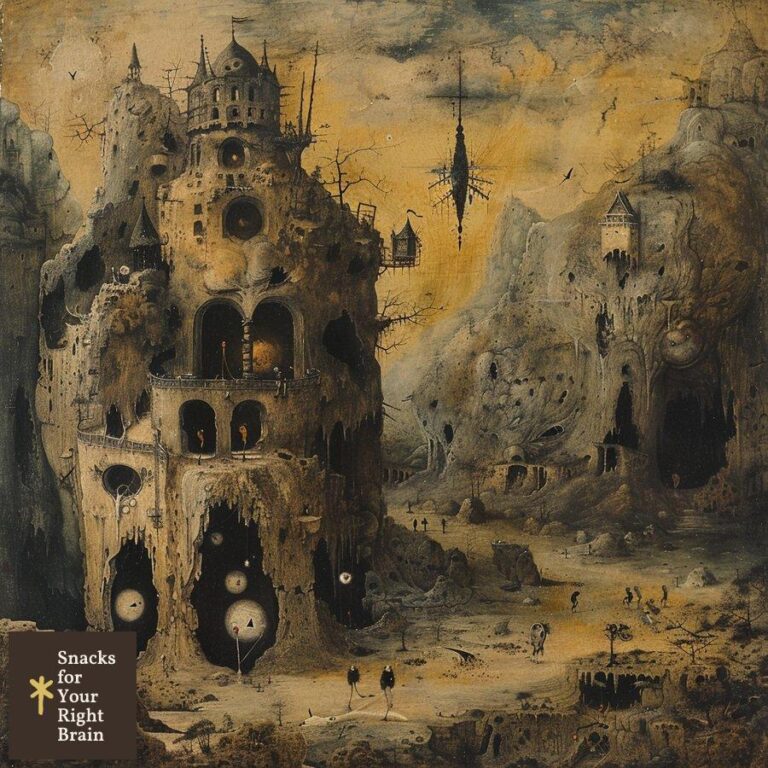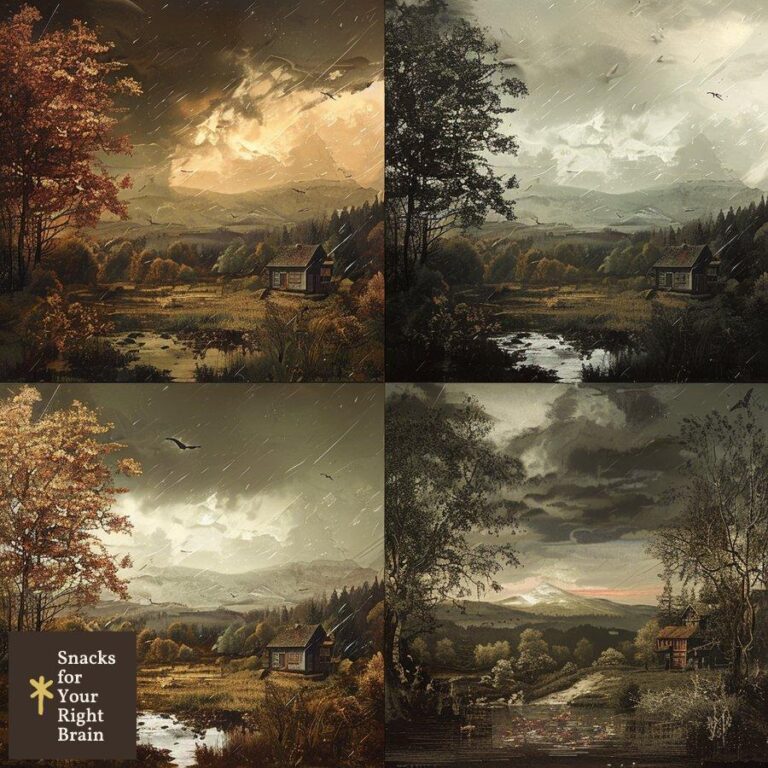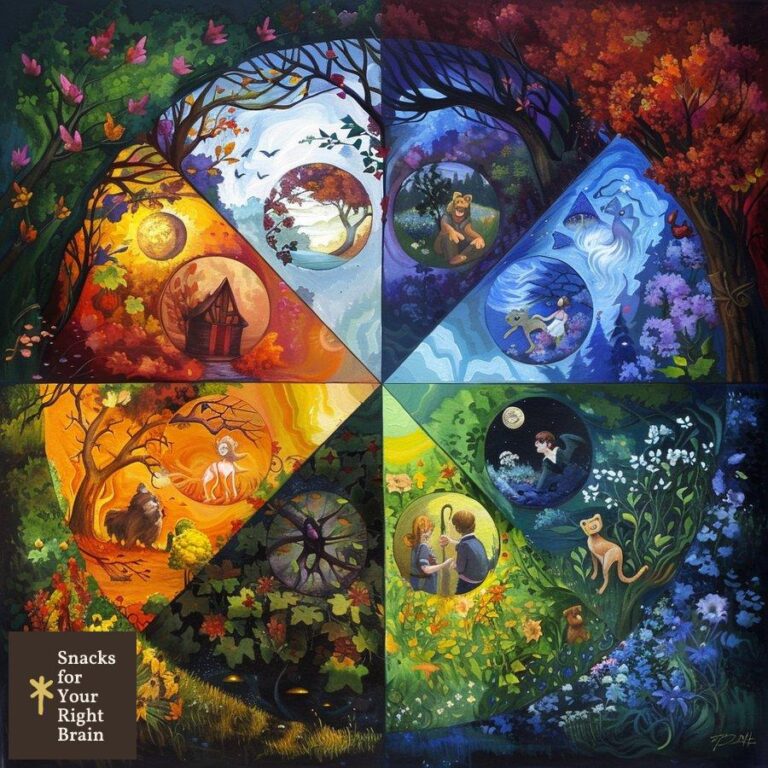What Is the Atmosphere of a Horror Story
What defines atmosphere in horror stories?
The atmosphere of a horror story is the overall mood, tone, and feeling that permeates the narrative, creating a sense of unease, dread, and fear in the reader. It is the intangible quality that sets the stage for the horrific events to unfold, immersing the reader in a world of shadows, uncertainty, and the unknown.
Atmosphere in horror is not just about the physical setting or the events that take place; it is a combination of sensory details, language, and psychological elements that work together to evoke a specific emotional response. It is the unseen force that lurks in the shadows, the whispers in the dark, and the uneasy feeling that something is not quite right.
The atmosphere of a horror story is what separates a mere scary story from a truly chilling and memorable narrative. It is the element that lingers long after the story has ended, haunting the reader’s mind and leaving a lasting impression.
How does atmosphere differ from setting in horror?
While setting and atmosphere are closely related in horror stories, they are not the same thing. Setting refers to the physical location and time period in which the story takes place, while atmosphere is the emotional and psychological tone that permeates the narrative.
Setting can contribute to the atmosphere of a horror story, but it is not the sole determinant. A creepy old mansion or a dark forest can certainly set the stage for a horror story, but it is the way the author uses language, sensory details, and psychological elements to create a sense of unease and dread that truly defines the atmosphere.
Atmosphere is also more subjective than setting. While setting can be objectively described, atmosphere is a more intangible quality that can vary from reader to reader. What one reader finds chilling and unsettling, another may find merely creepy or even boring.
However, a well-crafted atmosphere can elevate a horror story beyond the physical setting, creating a sense of immersion and engagement that draws the reader deeper into the narrative. A strong atmosphere can make even the most mundane setting feel threatening and dangerous, while a weak atmosphere can make even the most exotic or unusual setting feel flat and uninteresting.
What are the key elements that create a horror atmosphere?
There are several key elements that contribute to the creation of a horror atmosphere:
Sensory details: Vivid descriptions of sights, sounds, smells, tastes, and tactile sensations can create a strong sense of immersion and unease. The use of dark, shadowy imagery, creepy sounds like dripping water or creaking floorboards, and the smell of decay or fear can all contribute to a horror atmosphere.

Language and word choice: The language used in a horror story can have a significant impact on the atmosphere. The use of specific words and phrases that evoke a sense of unease, dread, or fear can heighten the tension and suspense. Repetition of certain words or phrases can also create a sense of foreboding or obsession.
Pacing and structure: The pacing and structure of a horror story can also contribute to the atmosphere. A slow, steady build-up of tension and suspense can create a sense of dread and anticipation, while sudden bursts of action or violence can create a sense of shock and horror. The use of cliffhangers and unanswered questions can also keep the reader on edge and contribute to the overall atmosphere.
Psychological elements: The psychological aspects of a horror story, such as the characters’ fears, anxieties, and insecurities, can contribute to the atmosphere. The exploration of themes such as madness, obsession, and the darker aspects of human nature can create a sense of unease and discomfort.
Symbolism and motifs: The use of recurring symbols and motifs can create a sense of cohesion and familiarity within a horror story, while also contributing to the overall atmosphere. The use of a particular color, object, or image can take on symbolic meaning and create a sense of unease or foreboding.
Contrast and juxtaposition: The use of contrast and juxtaposition can also contribute to the horror atmosphere. The contrast between light and dark, safety and danger, or the familiar and the unfamiliar can create a sense of unease and disorientation. The juxtaposition of seemingly unrelated elements can also create a sense of surrealism and unease.
How can setting be used to enhance horror atmosphere?
Setting is a crucial element in creating a horror atmosphere, as it provides the physical and emotional context for the story to unfold. The choice of setting can have a significant impact on the overall tone and mood of the narrative.
Some common settings used in horror stories to enhance atmosphere include:
Isolated locations: Remote locations such as abandoned houses, dark forests, or desolate landscapes can create a sense of isolation and vulnerability, heightening the sense of danger and fear.
Claustrophobic spaces: Cramped, confined spaces such as basements, attics, or small rooms can create a sense of claustrophobia and entrapment, adding to the overall sense of unease and fear.
Haunted or cursed locations: Settings with a history of supernatural or tragic events, such as haunted houses or cursed towns, can create a sense of foreboding and unease, as if the location itself is a character in the story.
Liminal spaces: Transitional spaces such as hallways, stairwells, or thresholds can create a sense of uncertainty and disorientation, as if the character is caught between two worlds.
Familiar settings made unfamiliar: The use of familiar settings, such as a character’s home or a local park, can create a sense of unease when made unfamiliar through the use of subtle changes or the presence of something sinister.
The way an author describes the setting can also contribute to the horror atmosphere. Vivid, sensory-rich descriptions that focus on dark, shadowy imagery, creepy sounds, and unsettling smells can create a strong sense of immersion and unease. The use of specific details and the way the setting interacts with the characters can also contribute to the overall atmosphere.
For example, a character’s fear of the dark may be heightened by the description of a dimly lit hallway, with the sound of creaking floorboards and the smell of damp, musty air. The way the character reacts to the setting can also contribute to the atmosphere, as their fear and unease can be palpable to the reader.
What role does language play in crafting horror atmosphere?
Language is a powerful tool in crafting the atmosphere of a horror story. The choice of words, the rhythm and cadence of the sentences, and the use of literary devices can all contribute to the overall sense of unease and fear.
One of the most important aspects of language in horror is the use of sensory details. Vivid descriptions of sights, sounds, smells, tastes, and tactile sensations can create a strong sense of immersion and unease. The use of dark, shadowy imagery, creepy sounds like dripping water or creaking floorboards, and the smell of decay or fear can all contribute to a horror atmosphere.

The use of specific words and phrases that evoke a sense of unease, dread, or fear can also heighten the tension and suspense. Words like “sinister,” “ominous,” and “foreboding” can create a sense of foreboding, while words like “visceral,” “guttural,” and “primal” can evoke a sense of raw, animalistic fear.
The rhythm and cadence of the sentences can also contribute to the horror atmosphere. Short, staccato sentences can create a sense of urgency and tension, while longer, more flowing sentences can create a sense of dread and unease. The use of repetition, both of words and phrases, can also create a sense of obsession or madness.
Literary devices such as metaphor and simile can also be used to create a horror atmosphere. Comparing something to a dark, sinister force or a primal, animalistic threat can create a sense of unease and fear. The use of symbolism, where an object or image takes on a deeper, more sinister meaning, can also contribute to the overall atmosphere.
The language used in a horror story can also vary depending on the point of view and the character’s emotional state. A character who is experiencing fear or dread may use different language than a character who is feeling calm or confident. The use of first-person narration can also create a strong sense of immersion and unease, as the reader is experiencing the story through the eyes of a character who is in the midst of a terrifying situation.
How do psychological aspects contribute to horror atmosphere?
Psychological aspects play a crucial role in creating a horror atmosphere by tapping into the reader’s deepest fears and anxieties. By exploring the darker aspects of the human psyche, horror stories can create a sense of unease and discomfort that lingers long after the story has ended.
One of the most important psychological aspects of horror is the exploration of fear itself. Horror stories can tap into a wide range of fears, from the fear of the unknown to the fear of death and the afterlife. By playing on these primal fears, horror stories can create a sense of dread and anticipation that keeps the reader on edge.
Another important psychological aspect of horror is the exploration of the darker aspects of human nature. Horror stories can delve into themes such as madness, obsession, and the capacity for evil within the human mind. By exploring these themes, horror stories can create a sense of unease and discomfort, as the reader is forced to confront the darker aspects of their own psyche.
The use of unreliable narrators or characters with unstable mental states can also contribute to the horror atmosphere. When the reader is unsure of what is real or what is imagined, it can create a sense of uncertainty and disorientation that heightens the sense of fear and unease.
The exploration of psychological trauma and its aftermath can also contribute to the horror atmosphere. Stories that deal with themes such as abuse, violence, and loss can create a sense of emotional intensity and rawness that adds to the overall sense of horror and dread.
Ultimately, the psychological aspects of horror are what make the genre so compelling and unsettling. By tapping into the reader’s deepest fears and anxieties, horror stories can create an atmosphere of unease and discomfort that lingers long after the story has ended.
How does atmosphere vary across different horror subgenres?
Horror is a vast and diverse genre, with numerous subgenres that each have their own unique atmosphere. While all horror stories share a common goal of creating a sense of fear and unease, the specific atmosphere of each subgenre can vary significantly.
Gothic horror, for example, often has a dark, brooding atmosphere that is heavily influenced by Romantic literature. The setting is typically a gloomy, decaying mansion or castle, with a focus on the supernatural and the macabre. The language is often lush and ornate, with a focus on creating a sense of atmosphere and mood.
Slasher horror, on the other hand, often has a more visceral and intense atmosphere. The focus is on graphic violence and gore, with a relentless killer stalking and dispatching victims in increasingly gruesome ways. The atmosphere is often fast-paced and adrenaline-fueled, with a focus on shock value and jump scares.
Psychological horror tends to have a more cerebral and unsettling atmosphere. The focus is on the inner workings of the mind, with a focus on themes such as madness, obsession, and the darker aspects of human nature. The atmosphere is often more subtle and creeping, with a focus on creating a sense of unease and discomfort.
Supernatural horror often has a more otherworldly and mysterious atmosphere. The focus is on the unknown and the unexplained, with a focus on ghosts, demons, and other supernatural entities. The atmosphere is often more atmospheric and moody, with a focus on creating a sense of awe and wonder.
Cosmic horror, as pioneered by H.P. Lovecraft, often has a more existential and unsettling atmosphere. The focus is on the insignificance of humanity in the face of the vast, uncaring universe, with a focus on themes such as madness and the unknowable. The atmosphere is often more abstract and philosophical, with a focus on creating a sense of cosmic dread and unease.
While each subgenre has its own unique atmosphere, there are some common elements that can be found across the genre as a whole. These include a focus on creating a sense of unease and fear, a reliance on sensory details and vivid imagery, and a willingness to explore the darker aspects of the human psyche. Ultimately, the atmosphere of a horror story is what sets the tone and mood for the narrative, and what makes the genre so compelling and unsettling.
What techniques help sustain a horror atmosphere throughout a story?
Sustaining a horror atmosphere throughout a story can be a challenging task, as it requires a delicate balance of tension, suspense, and release. However, there are several techniques that authors can use to maintain a consistent and effective horror atmosphere:
Pacing and structure: The pacing and structure of a horror story can have a significant impact on the atmosphere. A slow, steady build-up of tension and suspense can create a sense of dread and anticipation, while sudden bursts of action or violence can create a sense of shock and horror. The use of cliffhangers and unanswered questions can also keep the reader on edge and contribute to the overall atmosphere.
Sensory details: Vivid descriptions of sights, sounds, smells, tastes, and tactile sensations can create a strong sense of immersion and unease. The use of dark, shadowy imagery, creepy sounds like dripping water or creaking floorboards, and the smell of decay or fear can all contribute to a horror atmosphere.
Foreshadowing and hints: The use of foreshadowing and hints can create a sense of anticipation and dread, as the reader is left to wonder what horrors are to come. Subtle clues and suggestions can keep the reader on edge and contribute to the overall atmosphere.
Contrast and juxtaposition: The use of contrast and juxtaposition can also contribute to the horror atmosphere. The contrast between light and dark, safety and danger, or the familiar and the unfamiliar can create a sense of unease and disorientation. The juxtaposition of seemingly unrelated elements can also create a sense of surrealism and unease.
Recurring motifs and symbols: The use of recurring motifs and symbols can create a sense of cohesion and familiarity within a horror story, while also contributing to the overall atmosphere. The use of a particular color, object, or image can take on symbolic meaning and create a sense of unease or foreboding.
Unreliable narration: The use of an unreliable narrator can create a sense of uncertainty and disorientation, as the reader is left to question what is real and what is imagined. This can contribute to a sense of unease and dread, as the reader is never quite sure what to believe.
Psychological elements: The exploration of psychological themes such as madness, obsession, and the darker aspects of human nature can create a sense of unease and discomfort that lingers throughout the story. The use of characters with unstable mental states can also contribute to the overall atmosphere.
By using a combination of these techniques, authors can create a consistent and effective horror atmosphere that keeps the reader engaged and unsettled throughout the story. However, it’s important to note that not all horror stories need to maintain a constant atmosphere of dread and unease. Sometimes, a sudden shift in tone or mood can be just as effective in creating a sense of horror and unease.
What are common mistakes to avoid when creating horror atmosphere?

Creating a compelling and effective horror atmosphere is a challenging task, and there are several common mistakes that authors should avoid:
Overuse of sensory details: While vivid descriptions of sights, sounds, smells, tastes, and tactile sensations can contribute to a horror atmosphere, overusing these details can lead to a sense of overkill and distract from the overall narrative. It’s important to strike a balance between creating a strong sense of immersion and keeping the story moving forward.
Reliance on shock value: While sudden bursts of action or violence can create a sense of shock and horror, relying too heavily on shock value can lead to a sense of desensitization and diminish the overall impact of the story. It’s important to balance shock value with a sense of suspense and anticipation.
Lack of character development: Horror stories often focus on creating a strong sense of atmosphere and mood, but it’s important not to neglect character development. Without well-rounded, relatable characters, the reader may have a hard time engaging with the story and may not feel invested in the outcome.
Inconsistent tone and mood: Maintaining a consistent tone and mood throughout a horror story is crucial for creating a strong atmosphere. Sudden shifts in tone or mood can be jarring and disrupt the overall flow of the narrative. It’s important to keep the tone and mood consistent while still allowing for moments of contrast and juxtaposition.
Overexplaining the horror: One of the most effective ways to create a horror atmosphere is to leave some things to the reader’s imagination. Overexplaining the horror or providing too much information can diminish the sense of mystery and unease. It’s important to strike a balance between providing enough information to keep the reader engaged and leaving some things unsaid.
Relying too heavily on clichés: While horror is a genre that often relies on familiar tropes and conventions, overusing clichés can lead to a sense of predictability and diminish the overall impact of the story. It’s important to put a fresh spin on familiar elements and avoid relyingon clichés.
Ignoring pacing: Pacing is critical in horror storytelling. A story that is too slow may lose the reader’s interest, while one that is too fast can leave them feeling overwhelmed and disconnected. Balancing moments of tension with quieter, reflective scenes can help maintain a consistent atmosphere.
Neglecting the psychological aspect: Focusing solely on external horror elements, such as monsters or gore, can overlook the psychological depth that makes horror truly effective. Exploring the fears, anxieties, and inner turmoil of characters can create a more profound sense of dread and connection to the reader.
How have classic and contemporary authors approached atmosphere in horror?
Classic and contemporary authors have approached atmosphere in horror with unique styles and techniques that reflect their times and influences.
Classic authors:

-
Edgar Allan Poe: Known for his mastery of gothic horror, Poe created an atmosphere steeped in melancholy and dread. His use of first-person narration, rich sensory details, and themes of madness and death contribute to the oppressive atmosphere in works like “The Tell-Tale Heart” and “The Fall of the House of Usher.”
-
H.P. Lovecraft: Lovecraft’s cosmic horror relies on an atmosphere of existential dread and the insignificance of humanity in the face of incomprehensible forces. His use of archaic language, elaborate descriptions, and a focus on the unknown creates an unsettling atmosphere that lingers long after reading.
-
Shirley Jackson: In “The Haunting of Hill House,” Jackson expertly crafts an atmosphere of psychological horror. Her focus on the characters’ emotional states and the eerie, unsettling nature of the house itself creates a sense of dread that permeates the narrative.
Contemporary authors:
-
Stephen King: King often blends relatable characters with supernatural elements, creating an atmosphere that feels both familiar and terrifying. His ability to evoke small-town life, combined with the presence of lurking evil, creates a unique atmosphere in novels like “It” and “Pet Sematary.”
-
Paul Tremblay: In works like “The Cabin at the End of the World,” Tremblay uses a contemporary setting to explore psychological horror. His focus on the breakdown of family dynamics and the uncertainty of human behavior creates a tense atmosphere that resonates with modern readers.
-
Tananarive Due: Due’s work often explores themes of race, trauma, and the supernatural, creating an atmosphere that is both haunting and thought-provoking. Her ability to weave personal and historical narratives into her horror stories adds depth to the atmosphere, as seen in “The Good House.”
The evolution of horror literature reflects changing societal fears and anxieties, with both classic and contemporary authors using atmosphere to engage readers on emotional and psychological levels.
What impact does atmosphere have on the reader’s experience of horror?
The atmosphere of a horror story significantly impacts the reader’s experience, shaping their emotional responses and engagement with the narrative.
-
Emotional engagement: A well-crafted atmosphere draws readers into the story, allowing them to connect with the characters and their experiences. When the atmosphere evokes feelings of dread and unease, readers become more invested in the outcome, heightening their emotional engagement.
-
Suspension of disbelief: A strong atmosphere can help readers suspend their disbelief, allowing them to immerse themselves fully in the story. When the atmosphere feels authentic and believable, readers are more likely to accept the supernatural or horrific elements as part of the narrative.
-
Heightened tension and suspense: The atmosphere creates tension and suspense, keeping readers on edge. The combination of sensory details, pacing, and psychological elements can lead to a build-up of anticipation, making the eventual revelation or climax more impactful.
-
Lasting impressions: The atmosphere of a horror story can leave a lasting impression on readers, haunting them long after they’ve finished the narrative. A powerful atmosphere can evoke memories and feelings that resonate with readers, contributing to the story’s overall impact.
-
Reflection on personal fears: Horror often explores universal themes of fear and anxiety. A well-crafted atmosphere can prompt readers to confront their own fears and insecurities, leading to a deeper understanding of themselves and the world around them.
In summary, the atmosphere of a horror story is a vital component that shapes the reader’s experience, influencing their emotional responses, engagement, and lasting impressions. By skillfully crafting an atmosphere that resonates with readers, authors can create a more profound and unsettling experience that lingers in the mind long after the story has ended.






